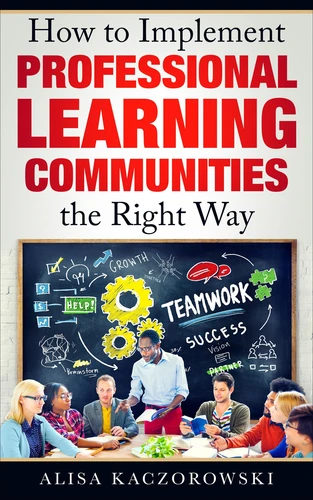How to Implement Professional Learning Communities the Right Way
Par :Formats :
Disponible dans votre compte client Decitre ou Furet du Nord dès validation de votre commande. Le format ePub est :
- Compatible avec une lecture sur My Vivlio (smartphone, tablette, ordinateur)
- Compatible avec une lecture sur liseuses Vivlio
- Pour les liseuses autres que Vivlio, vous devez utiliser le logiciel Adobe Digital Edition. Non compatible avec la lecture sur les liseuses Kindle, Remarkable et Sony
 , qui est-ce ?
, qui est-ce ?Notre partenaire de plateforme de lecture numérique où vous retrouverez l'ensemble de vos ebooks gratuitement
Pour en savoir plus sur nos ebooks, consultez notre aide en ligne ici
- FormatePub
- ISBN978-0-463-96095-0
- EAN9780463960950
- Date de parution19/09/2019
- Protection num.pas de protection
- Infos supplémentairesepub
- ÉditeurBluewater
Résumé
Are you an educator looking for a better way to analyze student data to inform your instruction? Or perhaps you're a school administrator wanting to implement a more strategic and vertically aligned approach to setting school-wide goals and improving student achievement. Either way, Professional Learning Communities, or PLCs, are the answer you're looking for. Whether you're not sure how to begin implementing PLCs in your school or just want to freshen up your already existing PLCs, this book is just for you.
How to Implement Professional Learning Communities the Right Way will take you through the main components that should be included in an effective PLC, as well as provide guiding questions to help you get started. Just a few of the topics that are covered include: the benefits of PLCs, how to identify a specific area of student need through data analysis, determining the logistics to make PLCs work in even the trickiest circumstances, planning a PLC cycle that works in your school and so much more.
This book is a must-read for any educator looking for a way to improve student achievement and growth levels in their school and create a culture of collaboration among teachers.
How to Implement Professional Learning Communities the Right Way will take you through the main components that should be included in an effective PLC, as well as provide guiding questions to help you get started. Just a few of the topics that are covered include: the benefits of PLCs, how to identify a specific area of student need through data analysis, determining the logistics to make PLCs work in even the trickiest circumstances, planning a PLC cycle that works in your school and so much more.
This book is a must-read for any educator looking for a way to improve student achievement and growth levels in their school and create a culture of collaboration among teachers.
Are you an educator looking for a better way to analyze student data to inform your instruction? Or perhaps you're a school administrator wanting to implement a more strategic and vertically aligned approach to setting school-wide goals and improving student achievement. Either way, Professional Learning Communities, or PLCs, are the answer you're looking for. Whether you're not sure how to begin implementing PLCs in your school or just want to freshen up your already existing PLCs, this book is just for you.
How to Implement Professional Learning Communities the Right Way will take you through the main components that should be included in an effective PLC, as well as provide guiding questions to help you get started. Just a few of the topics that are covered include: the benefits of PLCs, how to identify a specific area of student need through data analysis, determining the logistics to make PLCs work in even the trickiest circumstances, planning a PLC cycle that works in your school and so much more.
This book is a must-read for any educator looking for a way to improve student achievement and growth levels in their school and create a culture of collaboration among teachers.
How to Implement Professional Learning Communities the Right Way will take you through the main components that should be included in an effective PLC, as well as provide guiding questions to help you get started. Just a few of the topics that are covered include: the benefits of PLCs, how to identify a specific area of student need through data analysis, determining the logistics to make PLCs work in even the trickiest circumstances, planning a PLC cycle that works in your school and so much more.
This book is a must-read for any educator looking for a way to improve student achievement and growth levels in their school and create a culture of collaboration among teachers.



